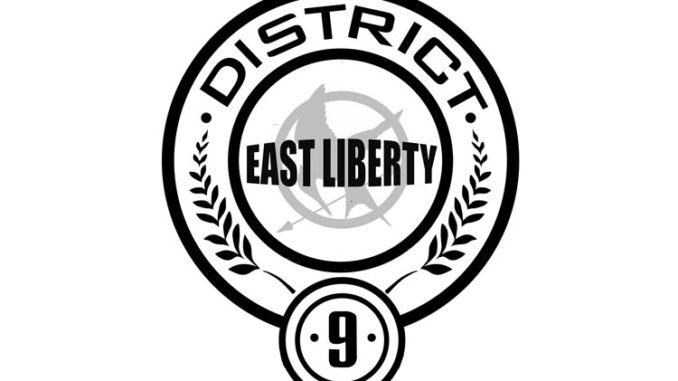
By Greg Godels
The catchword is “gentrification”—the popular and relatively benign word for a process of displacement and neglect of poor and minority communities in favor of an urban settler class of young, well-off, and mostly white urban gentry. It is not something entirely new or original: for over half a century, neglectful displacement has advanced under the even more benign-sounding guise of “urban renewal.”Nor is it limited to Pittsburgh or other rust belt cities in search of a new identity. New York City, Washington DC, San Francisco, Seattle, and other cities including Tulsa, Oklahoma have been overwhelmed by profit-obsessed developers joined by complicit politicians in ravaging low-income communities.
Like ocean waves, gentrification is washing over the boundaries of older, stable, but economically-challenged neighborhoods throughout the city of Pittsburgh, eroding the fringes of the Hill District, Lawrenceville, the Northside, Garfield, Friendship, North Oakland, Southside slopes and others. Cheap housing stock with character is too alluring to escape exploitation by profit-hungry real estate speculators eagerly waiting for the gentrification waves to reach tsunami proportions. Established, fixed and low-income residents are eased (or forced!) out of neighborhoods or burdened with unsustainable property tax increases.
Notably, the East Liberty neighborhood has been prominent in the gentrification spotlight for two reasons: the breakneck, relentless pace of the displacement of low-income minority residents and the boundless extent of the process.
Ironically, the city fathers had once isolated East Liberty as a kind of Bantustan, choking it off from other neighborhoods and saturating it with public housing. At one point, the development of an ersatz Walnut Street along Ellsworth Avenue—restaurants, bars, galleries, etc.—prompted the powers-that-be to dismantle the Ellsworth Avenue Bridge connecting fashionable Shadyside to East Liberty. Urban legend has it that the bridge was removed and relocated in order to prevent the “Black hordes” from invading Shadyside. Today, a newly installed foot bridge re-establishes that link to the “new,” whiter East Liberty.
With the successful arrival of Whole Foods and the Eastside shopping complex, the boundaries of “safe” Shadyside moved towards the heart of East Liberty. The city authorities kicked the door open further by eliminating pockets of public housing in the neighborhood.
The construction of a gated community, a shopping center, the destruction of a middle school and the arrival of Google paved the way for the explosive growth along the Penn Avenue corridor exemplified today by Walnut Capital’s Legoland luxury dormitories and the puzzlingly named “transportation center.” A frenzied rush to secure East Liberty properties ensued. Businesses that had pioneered in serving the “old” East Liberty were summarily driven out by high rents and terminated leases in order to exploit the gains of the inflated property values and higher rents of the “new” East Liberty.
Even Echo Realty, the owners of the Shady Hill Shopping Center, which enjoyed the business of moderate income and African-American residents of the East End, declined lease renewals to its long standing tenants, presumably to better exploit the East Liberty gentrification boom.
As all of this accelerated, local, and state politicians and their foundation partners eagerly encouraged these developments with buckets of public money, tax breaks, and infrastructure assistance. It is no exaggeration to say that they were totally oblivious to this toxic interaction of private greed with the realities of race and class.
It was left to a handful of local activists to jar the establishment—the cheerleaders of gentrification—from their smug complacency. When the owner of the Penn Plaza apartments—a large complex of affordable housing in East Liberty—decided to pitch its tenants into the streets to take advantage of the opportunities afforded by the ‘new” East Liberty, the activists and the tenants organized a righteous fight back. The local phony “progressive” politicos scrambled to address their newly discovered problem of urban displacement. They were caught in the embarrassment of seeing no problem and having no solution.
It is somewhat unfair to blame the “cleansing” of East Liberty on the urban gentry displacing African-Americans and the poor; they may be privileged and naïve, but they did not enable or fuel the wholesale “whitewash” of the neighborhood. Even the developers who descended upon East Liberty like locusts are not completely at fault; after all, like all predators, it is their nature to be aggressive and greedy.
But the elected officials and appointed authorities and the foundation wise-men and wise-women who pretend to look after the affairs of ALL of the residents of the city are accountable for these injustices.
The residents of all the city’s neighborhoods must join the fight to keep their communities intact. Reflecting on the early career of one of the Presidential candidates, Simon Head, writing recently for the New York Review of Books, cited the “cardinal rule of taking on the city’s dominant business interests and their allies in City Hall with a program that [is]… radical and progressive: curbing real estate development at the city center and providing ample public space there… building affordable housing; keeping out the mega-retailers and creating neighborhood associations as participants in city planning decisions.”
We desperately need a similar strategy in Pittsburgh.
For more information on the issues affecting Pittsburgh: thatspittsburghwithanh.wordpress.com
